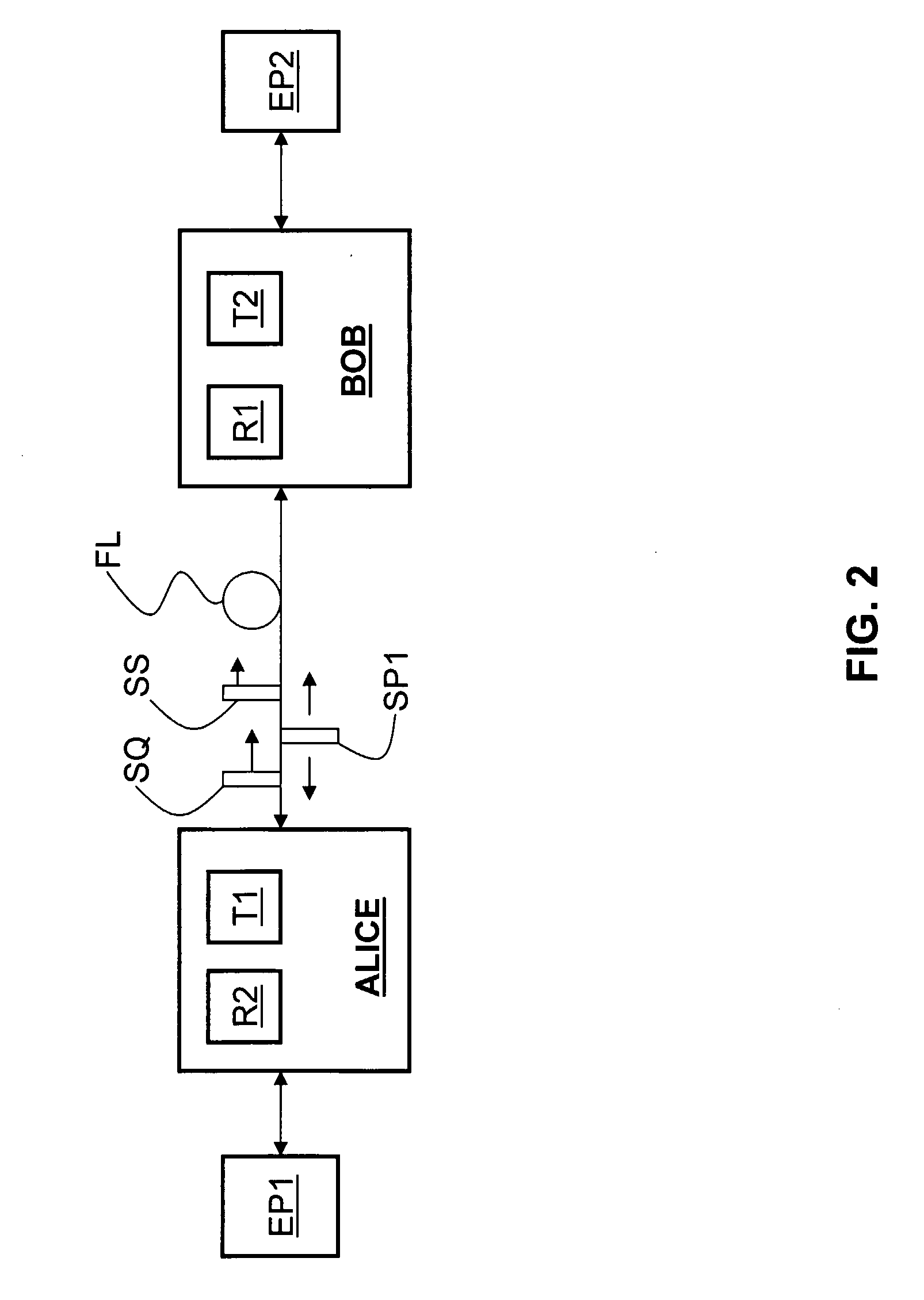Systems and Methods for Multiplexing Qkd Channels
a technology of qkd channel and system, applied in the field of systems and methods for multiplexing qkd channel, can solve the problems of optical fiber limiting the power that can be put into a single fiber, introducing errors into the transmitted signals and revealing her presence, and affecting the transmission effect of signals
- Summary
- Abstract
- Description
- Claims
- Application Information
AI Technical Summary
Benefits of technology
Problems solved by technology
Method used
Image
Examples
Embodiment Construction
[0015] The present invention includes systems and methods for multiplexing two or more channels of a quantum key distribution (QKD) system. The systems and method result in reduced detection noise for the public channel, thereby allowing weaker public channel signal to be used. Use of a weaker public channel signal enables multiplexing the public channel with the quantum channel and / or the sync channel on the same optical fiber for a commercially viable QKD system.
[0016] An aspect of the invention is a method that includes putting the optical public channel signal in return-to-zero (RZ) format and amplifying this signal just prior to it being detected. The method further includes precisely gating the detector to coincide with the expected arrival times of the pulses in the detected (electrical) public channel signal to reduce the detection noise. The method also includes forming a first signal comprising a train of pulses that is frequency-locked with the electrical public channel ...
PUM
 Login to View More
Login to View More Abstract
Description
Claims
Application Information
 Login to View More
Login to View More - R&D
- Intellectual Property
- Life Sciences
- Materials
- Tech Scout
- Unparalleled Data Quality
- Higher Quality Content
- 60% Fewer Hallucinations
Browse by: Latest US Patents, China's latest patents, Technical Efficacy Thesaurus, Application Domain, Technology Topic, Popular Technical Reports.
© 2025 PatSnap. All rights reserved.Legal|Privacy policy|Modern Slavery Act Transparency Statement|Sitemap|About US| Contact US: help@patsnap.com



